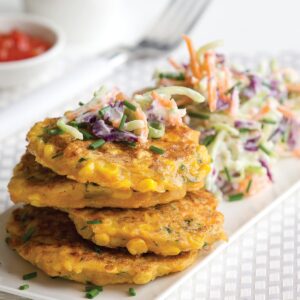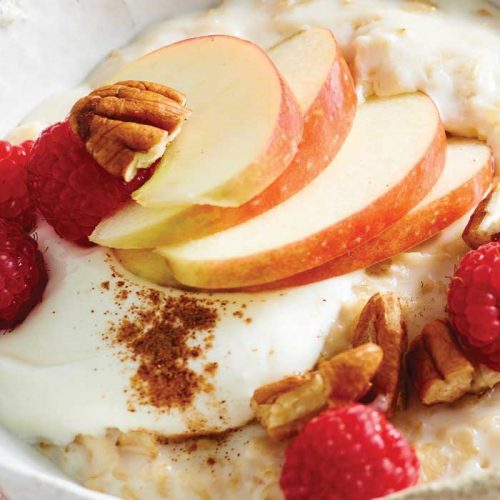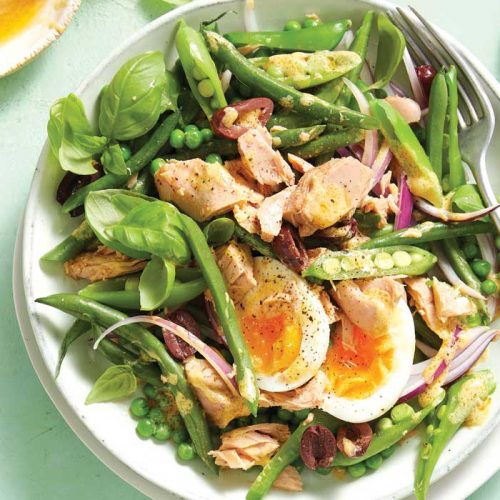
It IS possible to eat the warming winter comfort food we want, without stacking on the kilos.
As winter approaches, we change the food we eat. Instead of salads and light dishes, we want more warming, comforting food such as soups, hearty casseroles and creamy mash. And then we add our winter kilos. Sound familiar? The good news is we can learn the tricks to have our comfort food and eat it, too.
Satiety (a feeling of satisfaction or comfortable fullness) is about feeling full, or satisfied. But there’s no rigid line we cross which says, ‘I was hungry at that point and now, after that last bite, I’m full’. It would be helpful if there was! Satiety is much broader; it is somewhere between not feeling hungry any more and that over-stuffed, uncomfortable feeling when you can’t possibly have another bite.
Most of us realise our appetite is based on more than physiological hunger. Psychological and social influences have a strong affect on what, when, and how much we eat. Researchers have found when they speed clocks up, people will eat their meals by the clock rather than waiting for a signal from their bodies; and people with short-term memory loss will eat a second meal straight away if told it’s lunchtime. We eat more when there’s a greater choice of foods; when given larger servings; and when we share a meal than if we’re alone (an exception to this is women – but not men – on a date!). Boredom, stress and grief can affect appetite in different ways. Different hormones busily send messages to the brain to help us know when to stop eating, but it’s easy to override those messages. The more we override them, the less in tune with those messages we become.
The keys to staying satisfied are choosing foods which are more satisfying, and being able to identify when we’re satisfied and going with it.
Rate your hunger
It’s okay to eat at regular times, and we don’t want to wait until we’re ravenous before eating, but it can be helpful to consider how hungry we are before we have a meal or snack. If we’re not at all hungry at meal times, our earlier meals or snacks have been too filling (unless it’s an emotional issue which has curbed our appetite).
One way to get in touch with our bodies’ signals is to rate our hunger. Do this before and after a meal (or snack) using the scale below. In an ideal world, we’d always rate our hunger between 3 (before we eat) and 6 (after we’ve eaten).
- Rating our hunger before a meal or snack helps us recognise whether we are eating because we are truly hungry, as opposed to eating out of habit or an emotional need.
- Rating our hunger after a meal or snack helps us realise we don’t need to eat until we’re chock-full to survive until the next meal without becoming ravenous. If we’re not hungry by the next meal time, we can reduce the amount we’re having at meals.
- Remember, it takes around 20 minutes for your brain to receive the messages about what’s happening in the stomach, so eat slowly, and stop eating before you’re completely satisfied.
| Hunger rating | Meaning |
| 1 | I’m ravenous, I could eat a horse! |
| 2 | I’m starving |
| 3 | I’m hungry |
| 4 | I’m a bit peckish |
| 5 | I don’t feel any hunger |
| 6 | I’m satisfied |
| 7 | I’m too full – a bit uncomfortable |
| 8 | I’m, so full, I can’t move! |
Foods that satisfy
Protein
Research has shown protein is more satisfying than carbohydrate or fat, both at the mealtime and over the next few hours. So include protein foods with each meal.
- Eggs are satisfying at any time of the day, whether they’re poached at breakfast; scrambled at lunch; or as an omelette for dinner.
- An Australian study found fish is more satisfying than beef or chicken. Canned fish is an easy way to include a satisfying protein at lunch – and boost your omega-3 at the same time.
- Low-fat milk or low-fat yoghurt with your cereal or smoothie at breakfast helps keep you going – they are also satisfying snacks.
Fibre
Researchers have found that while a high-fibre meal doesn’t necessarily affect how much we eat straight away, it does seem to reduce how much we eat at the next meal because we’re not as hungry.
- Add a high-fibre cereal to your breakfast regime – mix it with your current cereal if you prefer.
- Use whole grain breads, rice and pasta.
- Add chickpeas, lentils, red kidney beans, cannellini beans or other legumes to salads and stews.
- Use hummus on bread or crackers.
Low kJ veges
Low-energy vegetables help us stop eating because the weight of food influences how much we eat and how full we feel. The water and fibre in these vegetables add weight, so we fill up for fewer kilojoules. Bulk up meals and snacks with low-energy vegetables.
- Snack on baby carrots, sliced capsicum, cherry tomatoes and other small or sliced vegetables. Dip in hummus to make them even more satisfying.
- We have an abundance of colourful, tasty, low-energy vegetables to choose from such as broccoli, beans, beetroot, cabbage, cauliflower, celery, courgettes, cucumber, eggplant, leeks, mushrooms, rhubarb, salad greens, silver beet, spinach, snow peas, spring onion, turnip…
Good fats
We all need some fat in our diet, but for women it’s been found that unsaturated fats stimulate a hormone which helps us feel full for longer. You don’t need to go overboard though – it’s the same hormone (cholecystokinin) which fibre stimulates.
- Add small amounts of seeds and nuts to your meals or snacks.
- Drizzle a little canola, olive, or rice bran oil over salads or vegetables.
Low-GI foods
High-glycaemic index (GI) foods give a sharp peak to our blood glucose, and the trough afterwards triggers hunger. Foods with a lower GI are digested more slowly and give a more steady release of glucose into the blood stream, so they don’t trigger hunger in the same way. Lower-GI foods include milk and yoghurt, whole grain cereals and breads, legumes and most vegetables.
www.healthyfood.com













